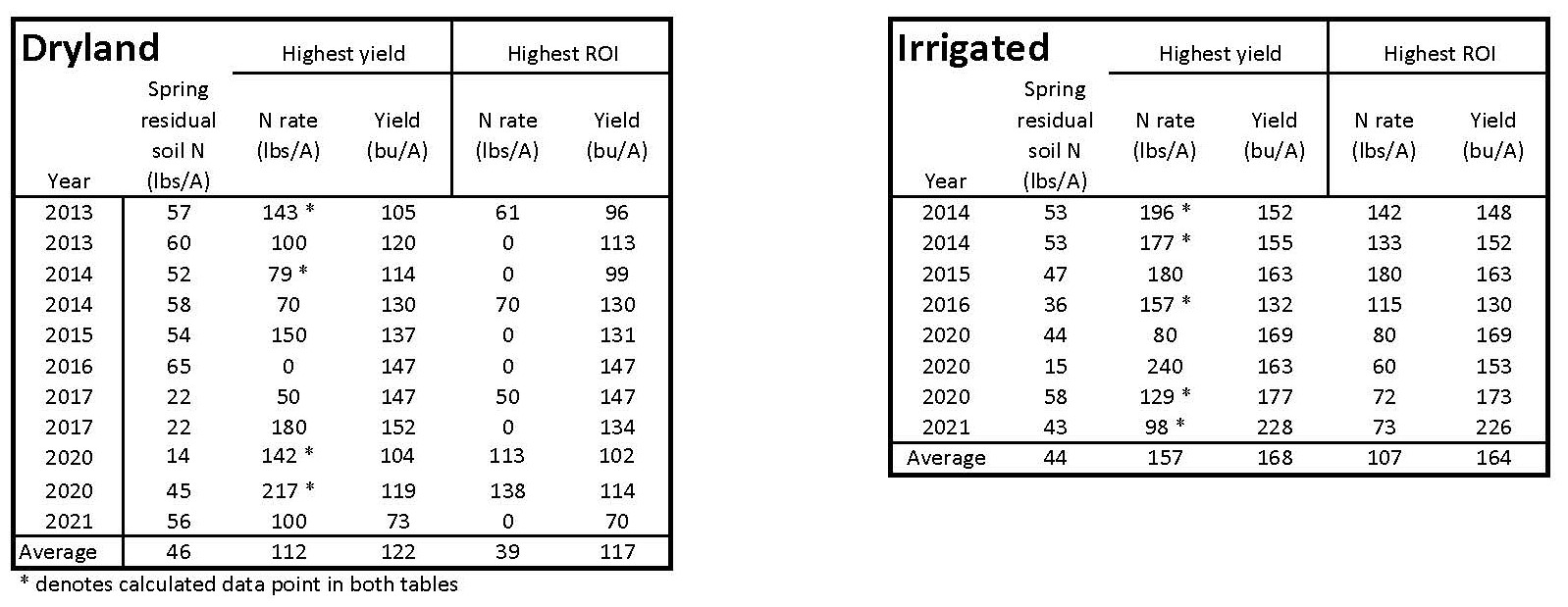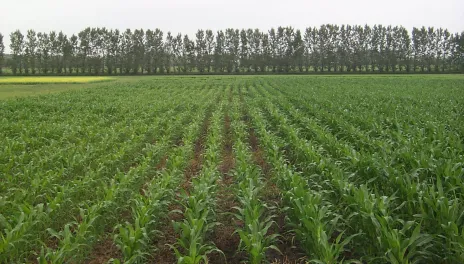Corn nitrogen response at the CREC in the last 9 years
This is a quick summary of the corn nitrogen response we have seen within CREC research trials in the fertility program ran by Dr. Jasper Teboh in the past 9 years. In the tables, each row represents an individual trial. In some years there were multiple nitrogen fertility trials. For each trial the best performing nitrogen treatment for corn yield is displayed. The highest yield is either a calculated value for those trials in which a quadratic yield curve could be fitted based on yield response from tested N rates within the trial or was the highest value observed.
As a reference, the table also displays the nitrogen rate and corresponding yield, at which nitrogen fertilizer had the highest return on investment (ROI). This was calculated using the recent, local prices of $0.87 per lb of N ($803/ton of urea) and $6.30 per bushel of corn.
Dryland corn
In the “Dryland” table, note that the average nitrogen rate producing the highest yield was 112 lbs. However, the individual values vary greatly between trials and years and range from 0 to 217 lbs of N. The nitrogen rates for each trial at which return on N investment was the highest was much lower at 39 lbs of N. Furthermore, the median value for that same variable was 0 lbs, because at our location at current prices it would not have been profitable to apply any nitrogen in 6 out of the 11 trials.
Irrigated corn
Under irrigation, highest yield was achieved at 157 lbs N on average. The data is displayed in the table marked “Irrigated”. The highest return on nitrogen investment was at 107 lbs N on average. Unlike under dryland, there were no trial sites or years in which foregoing nitrogen application would have been the most profitable option.
Summary
Spring residual nitrogen in the top 2 feet of soil ranged between 14 and 65 pounds in the dryland trials. At that limited range of nitrogen levels, residual nitrogen had no predictive value on corn nitrogen response. At our site, which has a loam soil and an average annual precipitation of 18.79 inches, the low availability of moisture likely affected the profitability of nitrogen application by limiting corn yield potential. This is evidenced by the observation that under irrigation some amount of nitrogen application was necessary to maximize profit in each trial, but the same was not universally true for the dryland trials. The nitrogen recommendation by the corn nitrogen calculator developed by Dr. Franzen of NDSU (https://www.ndsu.edu/pubweb/soils/corn) has a suggested range of +/-30 lbs N around a central value. In our case, on dryland, it is safe to say that it would be more profitable to consistently use the lower end of the recommendation range. This was true even at previous prices of $3.00 per bushel and $0.36 per pound of N.
The data displayed is specific to our site, and the prices used for calculating economic return are subject to changes. Therefore, this data is not meant as a fertilizer recommendation for corn and is for informational purposes only. However, given what the fertilizer prices have been recently, it would be worthwhile for farmers to consider their unique farmland characteristics and climate to see whether it is generally more profitable for them to use the lower or higher end of the nitrogen recommendation range.

Szilvia Yuja
Soils Research Specialist
szilvia.zilahisebess@ndsu.edu

